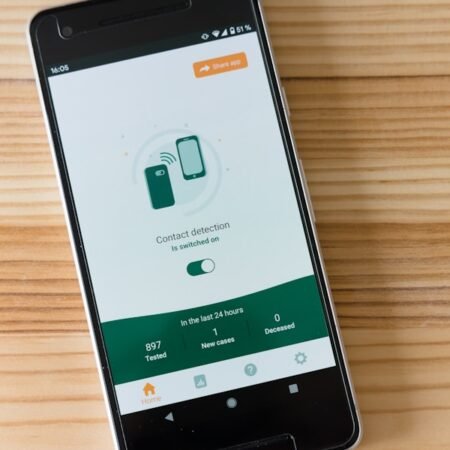When it comes to ensuring the safety of children during car travel, selecting the appropriate car seat is paramount. There are three primary types of car seats: infant seats, convertible seats, and booster seats. Infant seats are designed specifically for newborns and infants, typically accommodating children from birth up to around 30 pounds or until they reach the maximum height limit specified by the manufacturer.
These seats are rear-facing, which is the safest position for young children, as it provides optimal protection for their fragile necks and spines in the event of a collision. Convertible seats offer versatility, as they can be used in both rear-facing and forward-facing positions. This adaptability allows them to accommodate a wider age range, generally from birth up to 65 pounds or more, depending on the model.
Booster seats, on the other hand, are intended for older children who have outgrown their forward-facing car seats but are not yet tall enough to use a standard seat belt safely. Booster seats elevate the child so that the vehicle’s seat belt fits properly across their body, typically suitable for children aged 4 to 12 years.
Key Takeaways
- Infant, convertible, and booster seats each have their own unique features and are designed for specific age and size considerations.
- Safety features vary between infant, convertible, and booster seats, so it’s important to compare and choose the best option for your child.
- Consider your family’s lifestyle and needs when choosing a car seat, as well as the cost and value of each type.
- As your child grows, it’s important to transition between car seat types to ensure their safety and comfort.
- Proper installation and usage tips are crucial for all types of car seats to ensure maximum safety for your child.
Safety Features: Comparing Infant, Convertible, and Booster Seats
Infant Seats
Infant seats often include a five-point harness system that secures the child at the shoulders, hips, and between the legs. Many models also feature side-impact protection and energy-absorbing foam to minimize injury during a crash. Additionally, infant seats are designed to be easily removable from their bases, allowing parents to transport sleeping babies without disturbance.
Convertible Seats
Convertible seats also incorporate advanced safety features, such as adjustable harness systems that can be modified as the child grows. Many convertible models come with built-in side-impact protection and crumple zones that absorb energy during a collision. Some even offer additional safety technologies like anti-rebound bars or tether straps that further stabilize the seat in a crash.
Booster Seats
Booster seats, while lacking a harness system, focus on ensuring that the vehicle’s seat belt fits correctly across the child’s body. High-back booster seats provide head and neck support, while backless boosters are more portable and easier to store.
Age and Size Considerations for Each Type of Car Seat
Choosing the right car seat involves understanding the age and size of your child. Infant seats are ideal for newborns and infants up to about 12 months old or until they reach the weight limit. The rear-facing position is crucial during this stage, as it significantly reduces the risk of serious injury in an accident.
Parents should ensure that their child meets the height and weight requirements before transitioning to a convertible seat. Convertible seats can be used from infancy through toddlerhood and even into early childhood. They are suitable for children who have outgrown their infant seats but still need to be secured in a rear-facing position for as long as possible.
The American Academy of Pediatrics recommends keeping children rear-facing until they reach the maximum weight or height limit of their convertible seat. Once children surpass these limits, they can transition to forward-facing mode until they are ready for a booster seat, typically around age 4 or when they weigh at least 40 pounds. For more information, visit Safe in the Seat.
Installation and Usage Tips for Infant, Convertible, and Booster Seats
| Seat Type | Installation Tips | Usage Tips |
|---|---|---|
| Infant Seat | Use the LATCH system or seat belt to secure the base. Ensure the seat is at the correct angle. | Keep the harness snug and at or below the baby’s shoulders. Use the seat rear-facing until the baby outgrows it. |
| Convertible Seat | Install using the LATCH system or seat belt. Adjust the recline angle according to the manufacturer’s instructions. | Keep the harness snug and at or above the child’s shoulders. Use rear-facing for infants and toddlers, then forward-facing as they grow. |
| Booster Seat | Secure the booster seat with the seat belt. Ensure the lap belt sits low on the hips and the shoulder belt crosses the chest. | Use only with a lap and shoulder belt. Keep children in booster seats until they are big enough for a seat belt to fit properly. |
Proper installation of car seats is critical for ensuring safety during travel. For infant seats, it is essential to follow the manufacturer’s instructions carefully, as each model may have specific requirements regarding angle and base installation. Many infant seats come with built-in level indicators to help parents achieve the correct recline angle.
Additionally, using the LATCH (Lower Anchors and Tethers for Children) system can simplify installation by providing secure anchor points in most vehicles. Convertible and booster seats also require careful installation. For convertible seats, parents should ensure that the harness is snug against the child’s body and that the chest clip is positioned at armpit level.
When transitioning to a booster seat, it is vital to check that the vehicle’s seat belt fits properly across the child’s shoulder and lap. The lap belt should lie low across the thighs, while the shoulder belt should cross the middle of the chest. Regularly checking the fit of the seat belt as your child grows is essential for maintaining safety.
Cost Comparison: Finding the Best Value for Your Family

The cost of car seats can vary significantly based on type, brand, and features.
Infant seats typically range from $70 to $300, depending on safety features and additional conveniences such as travel systems that include strollers.
Convertible seats generally fall within a similar price range but may offer longer usability due to their dual functionality.
High-quality convertible models can cost between $150 and $400. Booster seats are often more affordable than their counterparts, with prices ranging from $20 to $200. While it may be tempting to opt for lower-priced options, investing in a reputable brand with strong safety ratings is crucial for ensuring your child’s protection on the road.
Additionally, considering how long each type of seat will last can help families find the best value over time.
Transitioning Between Car Seat Types as Your Child Grows
Transitioning to Convertible Seats
The transition from an infant seat to a convertible seat is a crucial step in ensuring a child’s safety while traveling. This change usually occurs when the child outgrows their infant seat, either by weight or height. It is essential for parents to be aware of the specific limits of their child’s infant seat and to make the transition to a convertible seat as soon as these limits are exceeded.
Monitoring Growth and Adhering to Safety Guidelines
Once children outgrow their convertible seats, they will need to switch to booster seats. This transition usually occurs around age 4 or when they reach 40 pounds. It is essential for parents to monitor their child’s growth closely and make changes as needed while adhering to safety recommendations from organizations like the American Academy of Pediatrics.
Importance of Booster Seats
Booster seats play a critical role in ensuring a child’s safety while traveling. They help to position the seatbelt correctly across the child’s body, reducing the risk of injury in the event of an accident. By following safety guidelines and making transitions between car seats as needed, parents can help to keep their children safe while traveling.
Following Safety Recommendations
Parents should always follow safety recommendations from reputable organizations when it comes to car seats and booster seats. This includes following the manufacturer’s instructions for installation and use, as well as adhering to any applicable laws and regulations in their area. By taking these steps, parents can help to ensure their child’s safety and well-being while traveling.
Making the Best Choice for Your Family’s Lifestyle and Needs
Ultimately, selecting the right car seat involves considering your family’s unique lifestyle and needs. Factors such as vehicle size, frequency of travel, and budget can all influence your decision. For families who frequently travel or use multiple vehicles, lightweight and portable options may be more suitable.
Conversely, families who prioritize long-term use may benefit from investing in high-quality convertible seats that can adapt as their child grows. Additionally, parents should consider their child’s comfort and preferences when choosing a car seat. Some children may feel more secure in high-back booster seats that provide additional support, while others may prefer backless models for ease of use.
By evaluating these factors alongside safety ratings and installation requirements, families can make informed decisions that prioritize both safety and convenience on the road.
FAQs
What are the different types of car seats available for children?
There are three main types of car seats for children: infant car seats, convertible car seats, and booster seats. Each type is designed for specific age and size ranges, and they have different features and installation methods.
What are the age and size considerations for each type of car seat?
Infant car seats are designed for newborns and young babies, typically from birth to around 1 year old or until they reach the maximum weight and height limits. Convertible car seats can be used in both rear-facing and forward-facing positions, accommodating children from infancy to toddlerhood. Booster seats are for older children who have outgrown their convertible car seats but are not yet ready for a regular seat belt.
What are the safety features of infant, convertible, and booster seats?
All car seats are designed to meet federal safety standards, but they offer different levels of protection. Infant car seats have a rear-facing design to provide maximum support for a baby’s head, neck, and spine. Convertible car seats offer extended rear-facing capabilities and adjustable harness systems. Booster seats elevate a child to the correct height for the seat belt to fit properly.
How should infant, convertible, and booster seats be installed and used?
Proper installation and usage are crucial for car seat safety. Infant car seats are typically installed using a base and a LATCH system or seat belt. Convertible car seats can be installed rear-facing or forward-facing, depending on the child’s age and size. Booster seats are used with the vehicle’s seat belt and should position the belt across the child’s chest and lap, not the neck or stomach.
What are the cost differences between infant, convertible, and booster seats?
The cost of car seats can vary depending on the brand, features, and quality. Generally, infant car seats are more expensive due to their specialized design for newborns. Convertible car seats may be a cost-effective option as they can be used for a longer period. Booster seats are typically the most affordable option.
How can families find the best value when choosing a car seat?
When considering the cost of a car seat, families should look for options that meet safety standards, fit their child’s size and age, and are compatible with their vehicle. It’s important to research and compare different brands and models to find the best value for their specific needs.
How can families transition between different types of car seats as their child grows?
As children grow, they will need to transition from an infant car seat to a convertible car seat and eventually to a booster seat. It’s important to follow the manufacturer’s guidelines for height, weight, and age limits when making these transitions. Parents should also ensure that the new car seat is properly installed and fits their child correctly.
How can families make the best choice for their lifestyle and needs when selecting a car seat?
When choosing a car seat, families should consider their lifestyle, vehicle size, budget, and the specific needs of their child. For example, frequent travelers may prioritize a lightweight and portable car seat, while those with multiple children may need car seats that can fit across a back seat. It’s important to assess these factors to make the best choice for the family.





































